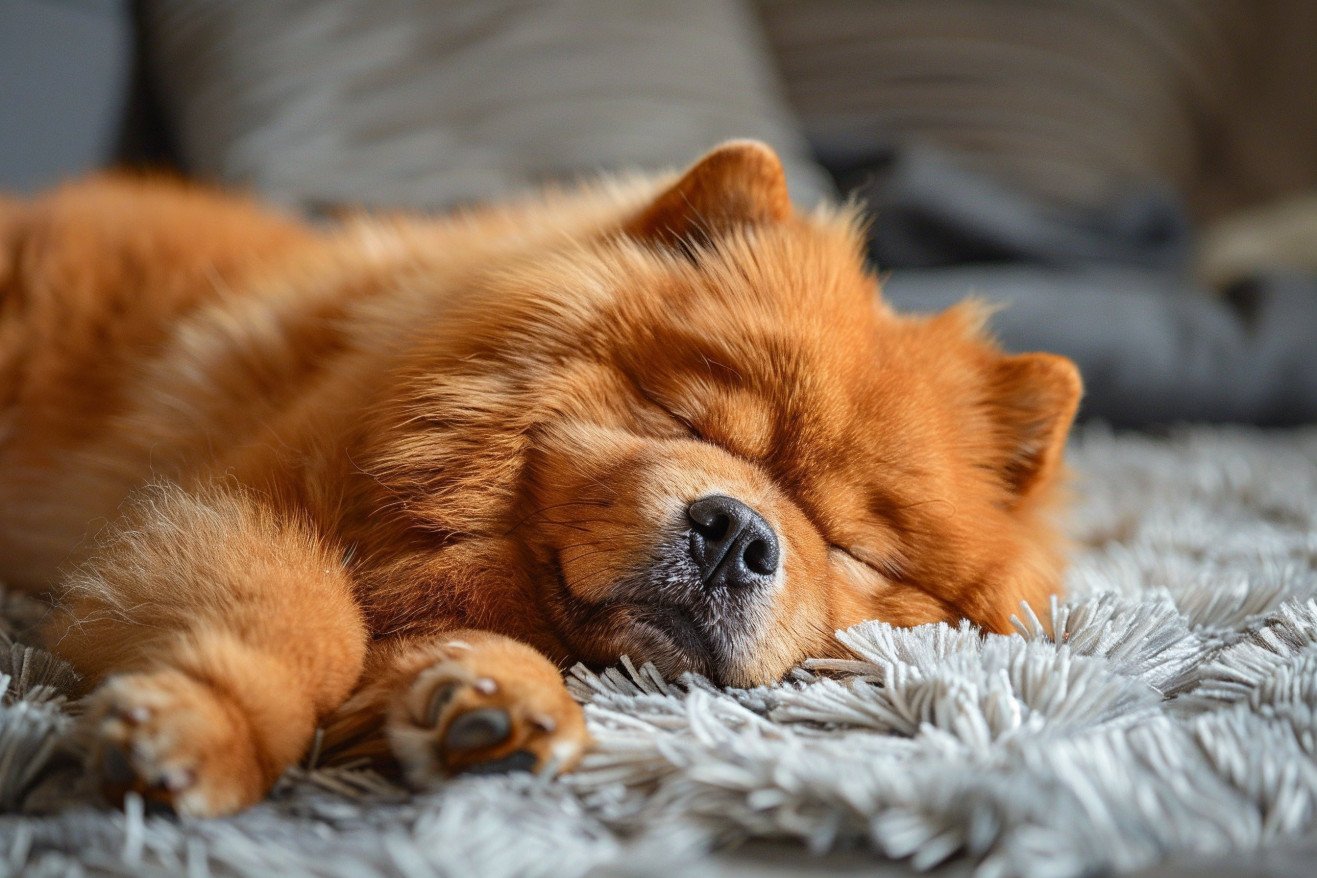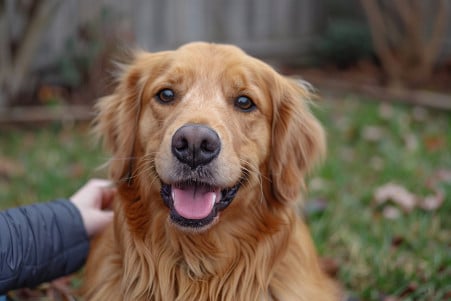Bear-Like Dog Breeds: The Canines That Look Like Cuddly Cubs
1 May 2024 • Updated 1 May 2024

While bear-like canines might seem like something out of a fairytale, there are several rare dog breeds that bear an uncanny resemblance to our ursine friends. The Caucasian Shepherd, Chow Chow, Pomeranian, and Tibetan Mastiff are some of the fluffier dog breeds whose thick double coats and facial features give them a distinctly bear-like appearance. These "bear dogs" were originally bred for guarding livestock and property in harsh climates.
We'll dive into the history and characteristics of these unique dog breeds, examining how their evolution led to such an unusual bear-like appearance. By understanding their origins and the purposes they were bred for, you'll gain a deeper appreciation for these remarkable canines that have captured the imagination of so many dog lovers around the world.
What dog breeds look like bears?
How Bear-Like Dogs Evolved
The bear-like appearance of bear dogs is the result of a combination of evolutionary factors and human intervention. According to a study published by the NIH, ancient breeds like the Chow Chow and Tibetan Mastiff were originally bred as working dogs in cold, harsh environments, which led to the development of the thick fur and stocky bodies that make them look like bears.
Human intervention also played a role, with breeders selecting for physical traits like large size, thick fur, and broad facial features that made the dogs look more like bears. These traits were then exaggerated over time through selective breeding. As The Dodo explains, breeds like the Newfoundland and Samoyed were bred to be working dogs for fishermen and herders, which meant that they needed to be strong, have a lot of endurance, and be able to withstand cold temperatures—all traits that bears also have.
Interestingly, some researchers have suggested that there may be an evolutionary connection between modern dogs and prehistoric "beardogs," which were a group of carnivorous mammals that lived in the northern hemisphere millions of years ago. The American Museum of Natural History explains that the analysis of fossils suggests that beardogs may have been among the earliest members of the dog family, and their bear-like appearance may have influenced the evolution of modern bear-like dogs.
In addition to human intervention, environmental factors also played a role in the evolution of bear-like dogs. For example, a thick coat of fur was an advantage in cold environments, and a large, muscular body was an advantage for working dogs that pulled sleds or guarded livestock, such as the Pyrenees Mountain Dog breed that was used by shepherds in the Pyrenees mountains. These practical needs helped create the bear-like appearance of breeds like the Chow Chow, Tibetan Mastiff, and Newfoundland.
Why People Love Bear-Like Dog Breeds
The internet has been abuzz in the last year with images of giant, fluffy dogs that look like bears. According to Snoozer UK, dogs like the Chow Chow, Maremma Sheepdog, Tibetan Mastiff, and Caucasian Shepherd are some of the breeds that have become known for their teddy bear-like looks.
The popularity of these "bear dogs" is on the rise, and the Newsweek article about the Old English Sheepdog is just one example of how their large size and gentle nature have captured people's hearts. Meanwhile, PureWow points out that the Akita, Bouvier Des Flandres, and Newfoundland are other breeds that look remarkably like bears.
That said, bear-like dogs require a lot of time and energy. Their thick fur needs regular maintenance, and their size means they need lots of exercise. Before getting one of these breeds, it's important to make sure you can meet their needs by learning about their specific requirements. Meanwhile, as these dogs become more popular, it will be important to make sure they are bred responsibly so that they remain healthy and happy.
Health and Welfare Issues
As appealing as the bear-like look of these dogs may be, it often comes with a range of health and welfare issues. According to research published in the PMC, brachycephalic breeds such as Pugs and Bulldogs are susceptible to a number of problems, including breathing difficulties, eye conditions, and skin problems. The FOUR PAWS International also notes that breeding for certain physical traits, such as wrinkled skin, small skulls, and long or short fur, can lead to chronic pain and other issues.
The ethical issues associated with trendy dog breeding are also well-documented. Focusing on appearance over health can lead to genetic conditions, behavioral problems, and a lower quality of life for the animals. As the RSPCA Knowledgebase notes, exaggerated physical traits and inbreeding are two of the main reasons these welfare issues occur.
While responsible breeding and health checks can help reduce these issues, the potential impact of owning a dog with genetic health problems can still be great, as The Humane Society explains. People considering getting a bear-like breed should think carefully about the long-term responsibilities and care involved.
Things to Know Before Getting a Teddy Bear-Like Dog
Owning a teddy bear-like dog breed is a big commitment that requires a lot of time and energy. Therefore, it's important to make sure you know what you're getting into before you bring one of these adorable pups home. According to the Comprehensive Guide to Teddy Bear Dogs, one of the things to keep in mind is that these dogs often have higher grooming and exercise needs than smaller breeds. This is because their long, thick fur needs to be brushed and bathed regularly to prevent matting and skin problems.
In addition, anyone thinking about getting a teddy bear-like dog should be aware of the potential health problems that are common in these breeds. As the Pet Insurance Review article explains, many hybrid breeds like Zuchons and Poochons are prone to conditions like hip dysplasia, deafness, and liver shunts. To reduce the risk of these issues, it's important to find a breeder who prioritizes health and temperament over looks.
If you don't have the time and energy to devote to a large, high-maintenance dog, a study published in the PMC recommends considering other options, such as medium-sized mixed breeds or lower-maintenance purebreds. By carefully evaluating your lifestyle and your ability to care for a dog, you can make sure that you and your pet have a positive and fulfilling experience.
Conclusion: The Popularity of Bear-Like Dog Breeds
The bear-like dog breeds that have become popular with the public are the result of centuries of evolution and selective breeding. While their thick coats, stocky builds, and resemblance to cuddly bears have made them popular, these same traits have also led to a number of health and welfare issues.
Research has shown that popularity has not been driven by better behavior or fewer inherited disorders, but rather by appearance and fashion trends. The median dog breed suffers from over 30 genetic disorders, with many popular bear-like breeds affected by a high number of these issues.
Responsible ownership of these breeds requires careful consideration of the increased time, financial, and emotional commitments involved. Prospective owners must educate themselves on the specific needs and potential challenges to ensure they can provide the proper care and environment for these unique canines.
In the end, the welfare of all dogs, regardless of their appearance, should be the most important consideration. By supporting ethical breeding and making informed choices, we can enjoy the rich history and unique characteristics of bear-like dog breeds while prioritizing their welfare.


